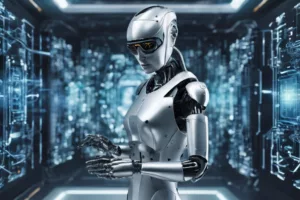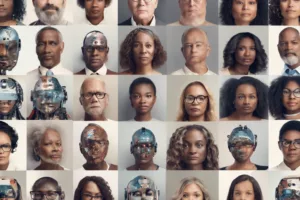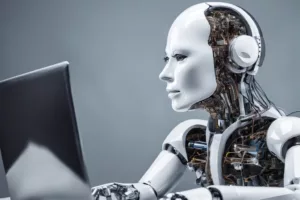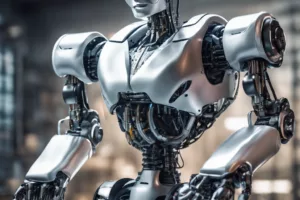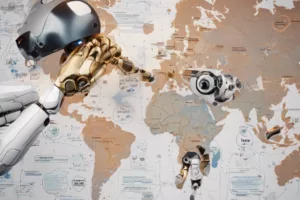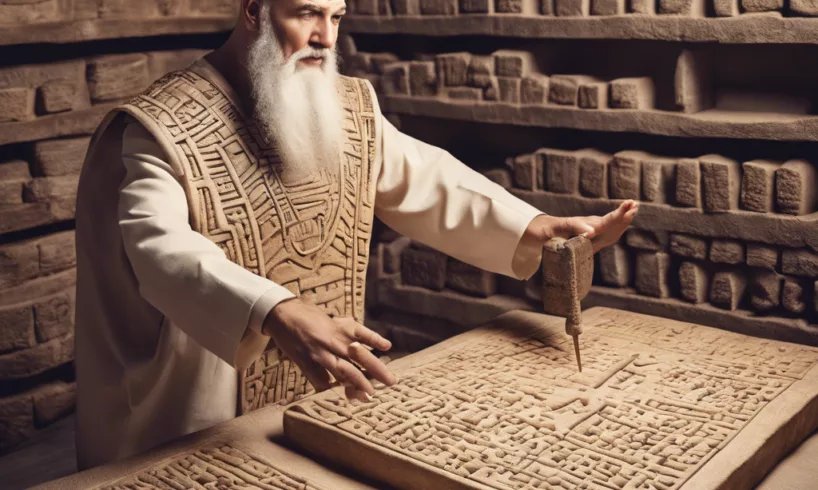
Researchers from German Universities Develop AI System to Decode 5,000-Year-Old Cuneiform Tablets
A team of researchers from Martin Luther University Halle-Wittenberg, Johannes Gutenberg University Mainz, and Mainz University of Applied Sciences has made a groundbreaking discovery in the field of ancient language decipherment. Their innovative use of artificial intelligence (AI) has enabled them to decode ancient cuneiform texts, shedding light on one of humanity's earliest forms of writing. This development, published in The Eurographics Association journal, represents a significant leap forward in understanding the ancient civilizations of Mesopotamia and offers new avenues for research and interpretation.
Deciphering Ancient Cuneiform Tablets:
The focus of the researchers' study was a collection of cuneiform tablets from the Frau Professor Hilprecht Collection. These tablets, originating from ancient Mesopotamia (present-day Iraq), provide invaluable insights into the daily lives and legal matters of ancient civilizations. However, due to their age and weathered condition, deciphering these tablets has proven challenging even for experts.
AI Comes to the Rescue:
To overcome this obstacle, the research team turned to AI technology. They developed a sophisticated AI model based on the Region-based Convolutional Neural Network (R-CNN) architecture, specifically designed for object recognition. The AI model was trained using a unique dataset of 3D models of 1,977 cuneiform tablets, annotated with over 21,000 cuneiform signs and 4,700 wedges.
The AI's Methodology:
The AI system employed a two-part pipeline to decode the ancient cuneiform tablets. Firstly, a sign detector, based on a RepPoints model with a ResNet18 backbone, identified the cuneiform characters on the tablets. This step was crucial for accurately locating the signs. Subsequently, a wedge detector, utilizing Point R-CNN with advanced features like Feature Pyramid Network (FPN) and RoI Align, classified and predicted the positions of the wedges, which form the fundamental elements of the cuneiform script.
Overcoming Challenges:
Unlike traditional optical character recognition software (OCR), which works well with 2D mediums, the AI system developed by the researchers was specifically trained to handle the complexities of 3D cuneiform tablets. By analyzing the depth of the impressions made by the stylus into the clay and the distances between symbols and wedges, the AI system was able to overcome challenges such as inconsistent lighting and color distractions often present in 2D photographs of the tablets.
Democratizing Access and Opening New Avenues for Research:
The successful decoding of ancient cuneiform texts using AI not only provides broader access to these historical records but also paves the way for further research and interpretation. This breakthrough technology allows for a more comprehensive analysis of the ancient texts and may be extended to other three-dimensional scripts found in weathered inscriptions, such as those discovered in cemeteries.
Conclusion:
The collaboration between researchers from Martin Luther University Halle-Wittenberg, Johannes Gutenberg University Mainz, and Mainz University of Applied Sciences has yielded a groundbreaking AI system capable of deciphering ancient cuneiform texts. By leveraging 3D models and advanced AI algorithms, the team has overcome the challenges posed by traditional 2D photographs and weathered tablets. This technological breakthrough not only unlocks the secrets of ancient civilizations but also opens up new possibilities for research and interpretation. As AI continues to evolve, it promises to revolutionize our understanding of human history and culture.

George Smith, with over a decade in tech journalism, excels in breaking down emerging tech trends. His work, spanning tech blogs and print, combines in-depth analysis with clarity, appealing to a wide readership. George's pieces often explore technology's societal impact, showcasing his foresight in industry trends.


